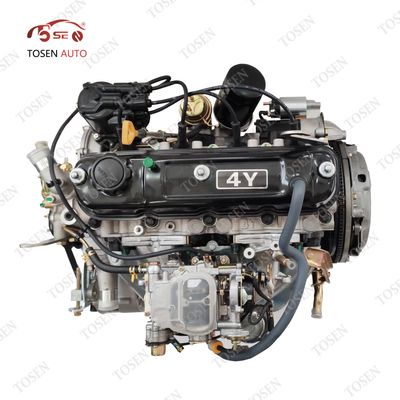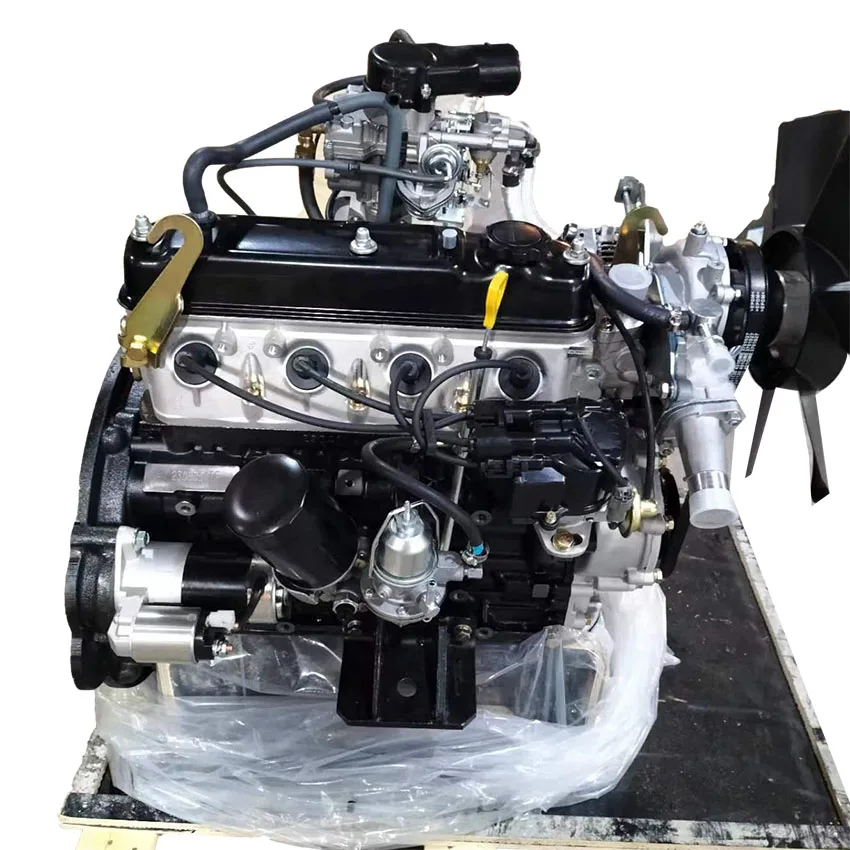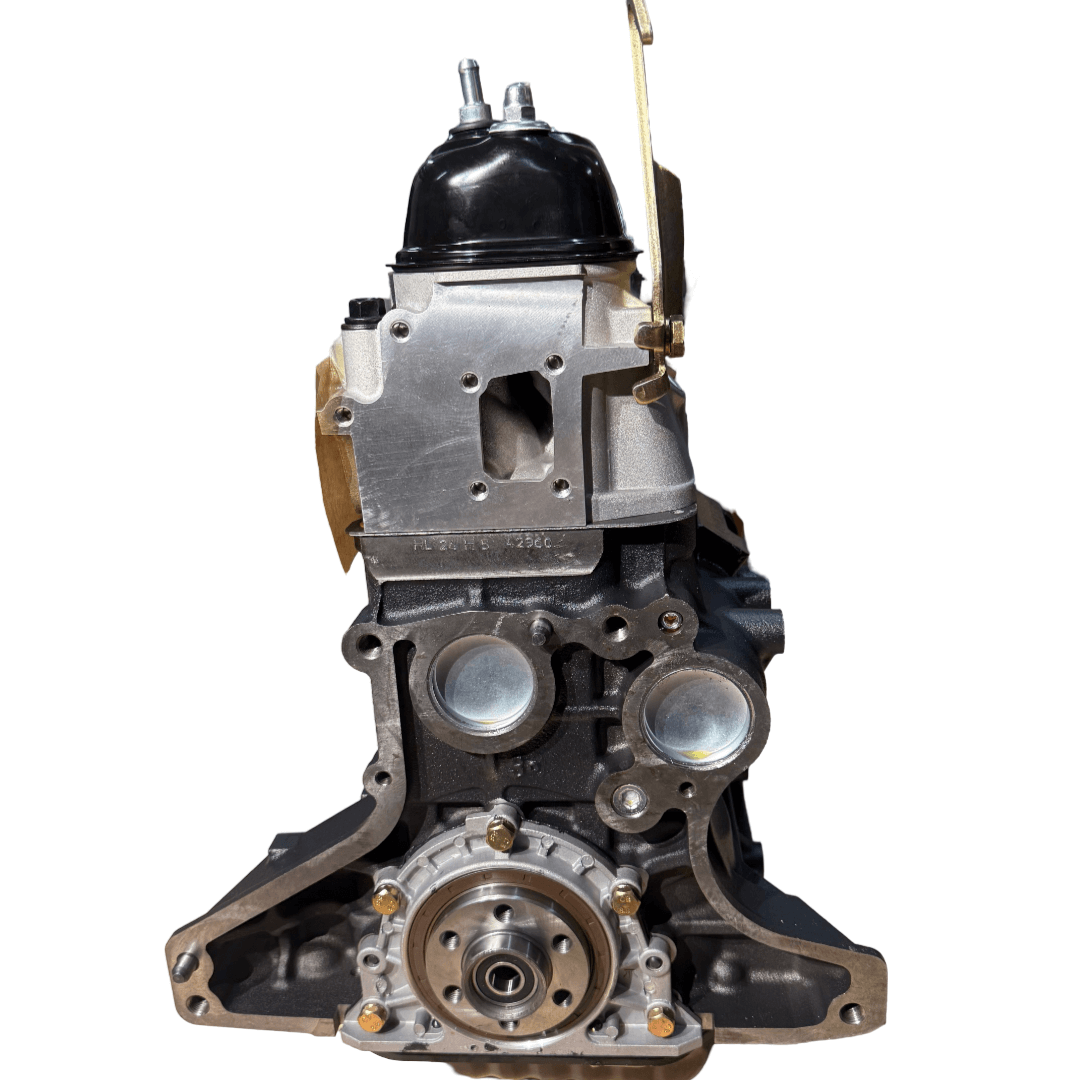The History and Evolution of the 4Y Engine in Automotive Engineering
The History and Evolution of the 4Y Engine in Automotive Engineering
Blog Article
Discovering the Numerous Kinds Of Engine: Which One Fits Your Needs?
Inner burning engines proceed to control due to their integrity, while electrical engines are obtaining grip for their sustainability. Hybrid engines offer a functional compromise, and diesel engines stand out for their power in demanding applications.

Interior Burning Engines
Internal burning engines (ICEs) are the backbone of modern transport, powering a substantial selection of vehicles from vehicles to aircrafts. These engines run on the concept of transforming fuel right into mechanical power through a series of controlled surges within a burning chamber. The most usual types of ICEs include fuel engines, diesel engines, and rotating engines, each made to satisfy specific performance and efficiency needs.
Fuel engines usually utilize trigger ignition, while diesel engines depend on compression ignition, resulting in distinct distinctions in fuel performance and power outcome (4y engine). Rotary engines, or Wankel engines, offer a small style and smooth operation, yet are less frequently used in mainstream applications
ICEs have actually undergone significant innovations in technology, including the intro of turbocharging and gas injection systems, which boost overall efficiency and efficiency. In spite of their effectiveness improvements, ICEs face increasing analysis due to their environmental impact, specifically regarding greenhouse gas exhausts. As the vehicle industry progresses, the future of ICEs continues to be a subject of dispute, stabilizing performance, efficiency, and environmental considerations. Nonetheless, they continue to play a critical function in worldwide transportation framework.
Electric Engines
As worries regarding ecological sustainability and fossil gas dependence expand, electrical engines have become a compelling option to internal combustion engines. These engines use electrical motors powered by batteries or fuel cells, offering a cleaner and extra efficient motive powers.
Among the key advantages of electric engines is their minimized discharges. Unlike traditional engines that melt nonrenewable fuel sources, electric engines generate zero tailpipe exhausts, considerably reducing air pollution and adding to boosted public health. In addition, the performance of electrical motors usually goes beyond that of interior combustion engines, converting a better proportion of energy from the power source into usable energy for motion.
Electric engines are additionally notable for their quiet operation, making them ideal for metropolitan settings. 4y engine. The simpleness of their style results in less moving components, which can lead to lowered maintenance costs and increased integrity in time
Nevertheless, challenges remain, including battery manufacturing influences, charging framework, and array limitations. In spite of these hurdles, the expanding financial investment in electrical automobile modern technology and renewable resource resources factors toward an encouraging future for electric engines, placed to play an important function in the change towards lasting transportation.
Crossbreed Engines
Blending the advantages of both typical and electric internal combustion engines, hybrid engines represent a functional solution in the quest for efficient and sustainable transport. These engines integrate a gasoline or diesel engine with an electrical motor, permitting for improved gas performance and lowered discharges compared to conventional cars.
Hybrid engines operate in numerous modes, utilizing the electrical motor for low-speed driving and the internal burning engine for greater speeds or when more power is required. This dynamic operation not just enhances gas economic climate however likewise adds to a smoother driving experience. Regenerative braking is one more vital attribute, capturing energy usually shed during stopping have a peek at these guys and rerouting it to charge the battery.

As consumers increasingly prioritize eco-friendliness, crossbreed engines stand out as a practical option, offering a reliable balance of performance, performance, and ecological responsibility. This versatility makes them appropriate for metropolitan commuting and long-distance traveling alike.
Diesel Motor
Efficiency and power are trademarks of diesel engines, which have long been preferred for their effectiveness and fuel economic situation. These engines operate the principle of compression ignition, where air is compressed to a high temperature before fuel is injected, sparking it without the demand for spark plugs. This process makes it possible for diesel motor to achieve higher thermal performance contrasted to gas engines, equating into far better fuel gas mileage and reduced co2 exhausts.
Diesel engines are especially fit for sturdy applications such as vehicles, buses, and commercial machinery, where torque and sturdiness are extremely important. Their style generally includes stronger elements to hold up against the greater pressures created throughout procedure, causing longer solution life and decreased upkeep expenses.

Different Fuel Engines
While diesel engines have lengthy dominated the landscape of heavy-duty source of power, different gas engines are obtaining grip as feasible options for a much more lasting future. These engines utilize a variety of gas, such as compressed natural gas (CNG), hydrogen, lp, and ethanol, aiming to reduce greenhouse gas discharges and reliance on fossil fuels.
One considerable benefit of different fuel engines is their potential to reduced carbon footprints. CNG engines release fewer toxins contrasted to typical diesel engines, making them ideal for metropolitan transportation systems and fleets seeking to pop over here enhance air high quality. Ethanol, stemmed from biomass, not just decreases emissions but additionally sustains farming economies.
Hydrogen fuel cells represent an advanced advancement in this world, using zero-emission power with a chemical response between hydrogen and oxygen. Difficulties such as infrastructure growth and production prices remain barriers to prevalent fostering.
Conclusion
Interior burning engines supply integrity, while electrical engines focus on sustainability and decreased maintenance. Hybrid engines combine the advantages of both, improving performance, whereas diesel engines offer premium power and torque for durable applications.
Hybrid engines provide a flexible concession, and diesel engines stand out for their power in demanding applications. The most usual types of ICEs consist of fuel engines, diesel engines, and rotating engines, each made to meet particular performance and performance demands.
Unlike conventional engines that burn fossil fuels, electrical engines generate no tailpipe emissions, considerably lowering air pollution and adding to improved public health and wellness.Crossbreed engines run in numerous modes, making use of the electric motor for low-speed driving and the internal combustion engine pop over to this web-site for greater speeds or when even more power is needed. Crossbreed engines combine the advantages of both, improving effectiveness, whereas diesel engines give superior power and torque for sturdy applications.
Report this page